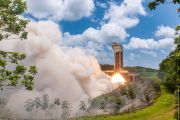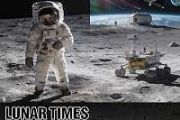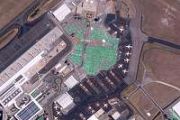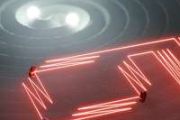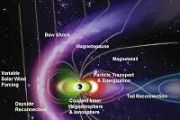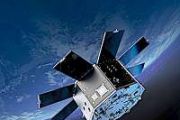
Copernical Team
China launches Lijian-1 Y2 carrier rocket
 China on Wednesday launched a Lijian-1 Y2 carrier rocket with 26 satellites onboard.
The rocket blasted off at 12:10 p.m. (Beijing Time) from the Jiuquan Satellite Launch Center in northwest China, and sent a group of experiment satellites into the planned orbits.
The satellites will be mainly used for technology verification and commercial remote sensing information services.
China on Wednesday launched a Lijian-1 Y2 carrier rocket with 26 satellites onboard.
The rocket blasted off at 12:10 p.m. (Beijing Time) from the Jiuquan Satellite Launch Center in northwest China, and sent a group of experiment satellites into the planned orbits.
The satellites will be mainly used for technology verification and commercial remote sensing information services. Rocket launches with record payload
 China launched a ZK 1A carrier rocket from the Jiuquan Satellite Launch Center in northwestern China, transporting 26 satellites into space and setting a new record for the most spacecraft launched by a single Chinese rocket.
The 30-meter, solid-propellant rocket blasted off at 12:10 pm and soon placed the satellites into preset orbits, including the Shiyan 24A and 24B experimental satelli
China launched a ZK 1A carrier rocket from the Jiuquan Satellite Launch Center in northwestern China, transporting 26 satellites into space and setting a new record for the most spacecraft launched by a single Chinese rocket.
The 30-meter, solid-propellant rocket blasted off at 12:10 pm and soon placed the satellites into preset orbits, including the Shiyan 24A and 24B experimental satelli How NASA gives a name to every spot it studies on Mars
 NASA's Perseverance rover is currently investigating rock outcrops alongside the rim of Mars' Belva Crater. Some 2,300 miles (3,700 kilometers) away, NASA's Curiosity rover recently drilled a sample at a location called "Ubajara." The crater bears an official name; the drill location is identified by a nickname, hence the quotation marks.
Both names are among thousands applied by NASA miss
NASA's Perseverance rover is currently investigating rock outcrops alongside the rim of Mars' Belva Crater. Some 2,300 miles (3,700 kilometers) away, NASA's Curiosity rover recently drilled a sample at a location called "Ubajara." The crater bears an official name; the drill location is identified by a nickname, hence the quotation marks.
Both names are among thousands applied by NASA miss Astronomers observe giant tails of helium escaping Jupiter-like planet
 A team of astronomers has used observations from the Hobby-Eberly Telescope (HET) at The University of Texas at Austin's McDonald Observatory to discover some of the longest tails of gas yet observed escaping a planet.
The planet, HAT-P-32b, is nearly twice the size of Jupiter and losing its atmosphere through dramatic jets of helium unfurling before and behind it as it travels through spa
A team of astronomers has used observations from the Hobby-Eberly Telescope (HET) at The University of Texas at Austin's McDonald Observatory to discover some of the longest tails of gas yet observed escaping a planet.
The planet, HAT-P-32b, is nearly twice the size of Jupiter and losing its atmosphere through dramatic jets of helium unfurling before and behind it as it travels through spa Elusive planets play "hide and seek" with CHEOPS
 ESA's exoplanet mission Cheops confirmed the existence of four warm exoplanets orbiting four stars in our Milky Way. These exoplanets have sizes between Earth and Neptune and orbit their stars closer than Mercury our Sun.
These so-called mini-Neptunes are unlike any planet in our Solar System and provide a 'missing link' between Earth-like and Neptune-like planets that is not yet understoo
ESA's exoplanet mission Cheops confirmed the existence of four warm exoplanets orbiting four stars in our Milky Way. These exoplanets have sizes between Earth and Neptune and orbit their stars closer than Mercury our Sun.
These so-called mini-Neptunes are unlike any planet in our Solar System and provide a 'missing link' between Earth-like and Neptune-like planets that is not yet understoo Existence of massive first-generation stars with 260 solar masses confirmed
 A new study led by Chinese scientists has confirmed the existence of first-generation stars with 260 solar masses for the first time by finding evidence of the existence of pair-instability supernovae (PISNe) which evolved from such massive first stars in the early universe.
Previously, studies had only confirmed the existence of first-generation stars of under 100 solar masses, and thus t
A new study led by Chinese scientists has confirmed the existence of first-generation stars with 260 solar masses for the first time by finding evidence of the existence of pair-instability supernovae (PISNe) which evolved from such massive first stars in the early universe.
Previously, studies had only confirmed the existence of first-generation stars of under 100 solar masses, and thus t CALET captures charge-sign dependent cosmic ray modulation
 The movement of cosmic ray particles across space, such as electrons and protons, is influenced by the Sun's magnetic field, causing fluctuations in the intensity of galactic cosmic rays (GCRs) reaching Earth in response to the solar cycle. During periods of low solar activity, such as the solar minimum, more GCRs have been observed to reach Earth compared to that for periods of high solar activ
The movement of cosmic ray particles across space, such as electrons and protons, is influenced by the Sun's magnetic field, causing fluctuations in the intensity of galactic cosmic rays (GCRs) reaching Earth in response to the solar cycle. During periods of low solar activity, such as the solar minimum, more GCRs have been observed to reach Earth compared to that for periods of high solar activ HawkEye 360's Cluster 7 begins operation in record time
 HawkEye 360 Inc., the world's leading defense technology company for space-based radio frequency (RF) data and analytics, reports that its Cluster 7 satellites have begun operation. This latest satellite trio achieved initial operating capability in record time after successfully launching into orbit on April 15, 2023.
A new 300MHz whip antenna provides better coverage in the 270MHz - 330M
HawkEye 360 Inc., the world's leading defense technology company for space-based radio frequency (RF) data and analytics, reports that its Cluster 7 satellites have begun operation. This latest satellite trio achieved initial operating capability in record time after successfully launching into orbit on April 15, 2023.
A new 300MHz whip antenna provides better coverage in the 270MHz - 330M LEO PNT satellite signal simulator debuts at JNC 2023 conference
 Spirent will demonstrate the first fully-certified Xona satellite constellation simulator, SimXona, at the 2023 Joint Navigation Conference (JNC), June 12-15, 2023, in San Diego, CA. Organized by the Institute of Navigation, JNC is the largest U.S. military positioning, navigation, and timing (PNT) conference, with government, defense, and industry participation.
Spirent, the leading globa
Spirent will demonstrate the first fully-certified Xona satellite constellation simulator, SimXona, at the 2023 Joint Navigation Conference (JNC), June 12-15, 2023, in San Diego, CA. Organized by the Institute of Navigation, JNC is the largest U.S. military positioning, navigation, and timing (PNT) conference, with government, defense, and industry participation.
Spirent, the leading globa CNES, E-Space complete next-generation low earth orbit constellation study
 E-Space has completed a five-month feasibility study, commissioned by the French Space Agency, Centre National D'Etudes Spatiales (CNES). The study aimed at assessing and validating the technical capabilities of the E-Space satellite system (space platform, communication payload, guidance, navigation and control (GNC) and user terminal) as well as the long-term viability of the Company's underly
E-Space has completed a five-month feasibility study, commissioned by the French Space Agency, Centre National D'Etudes Spatiales (CNES). The study aimed at assessing and validating the technical capabilities of the E-Space satellite system (space platform, communication payload, guidance, navigation and control (GNC) and user terminal) as well as the long-term viability of the Company's underly 











